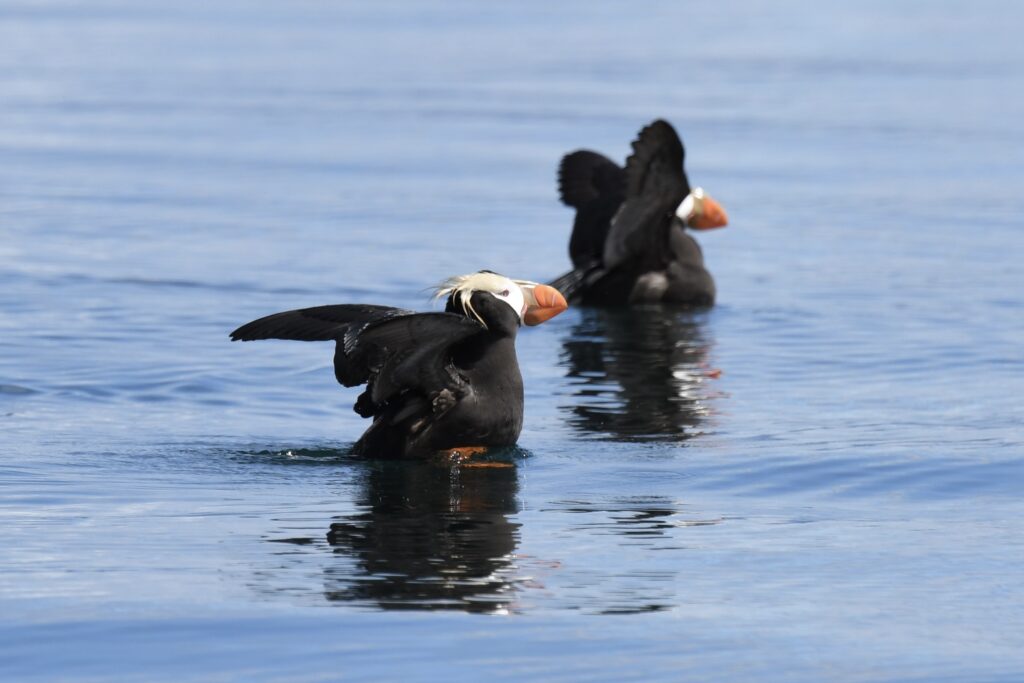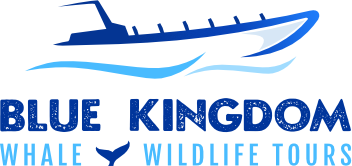Puffins of the Salish Sea
In the easternmost point of the Strait of Juan de Fuca in Washington State lies a couple incredibly important pieces of land. In addition to the seals and sea lions that haul out there, several species of seabird rely on Smith and Protection Islands for nesting. The cliff-like bluffs created from coastal erosion make particularly good habitat for burrowing nesters like the tufted puffin. We love to visit these sites to try and catch a glimpse of some of the few tufted puffins that call this place home.
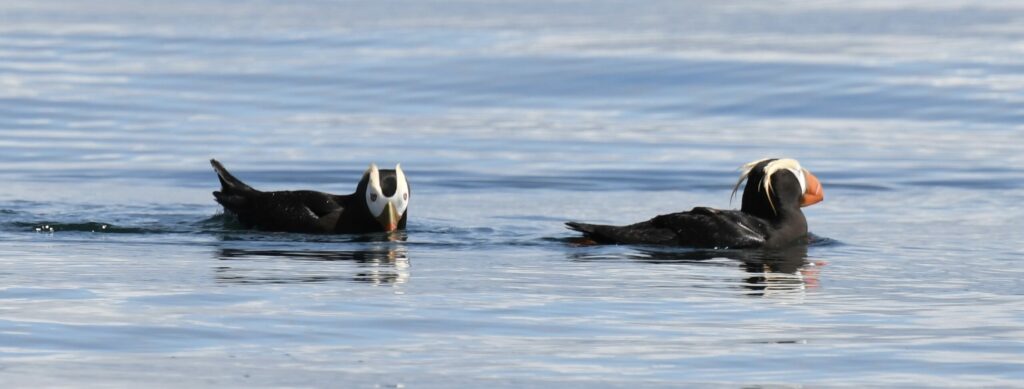
Tufted Puffin Ecology
The tufted puffin is a relatively small seabird that inhabits the north Pacific Ocean from central California up through northern Alaska and into northeastern Russia. During the winter, these birds are found in the central north Pacific Ocean. During their breeding season (mid-April through September) is when we get to see them. They migrate back to the rocky, grass covered coastal cliffs where they will breed and nest. Tufted puffins dig burrow nests into cliff faces, sometimes up to 5 feet deep! There the female will lay a single egg, which both parents will care and provide food for once it is hatched. Juvenile (non-breeding) puffins will spend their first winter in the open ocean just like their parents and will often stay out there for up to two more years, until they are sexually mature. Puffins become reproductively active at 3 years of age and can live for up to 20 years in the wild.
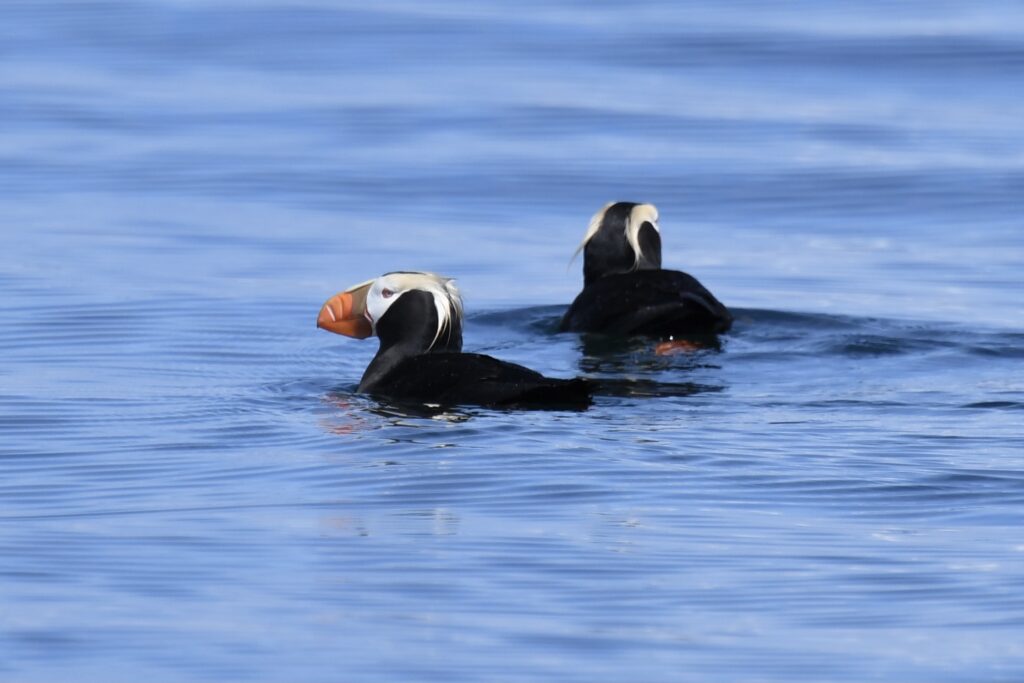
What Makes Smith and Protection Islands So Special?
Smith and Protection Islands are special in Washington State because they are two of the last nesting sites in the Salish Sea area for tufted puffins. There were once an estimated 43 tufted puffin nesting sites across our state, but due to the effects of climate change, fisheries bycatch, and introduced species competition, many native seabirds, including the tufted puffin are not faring well in Washington. However, Smith and Protection Islands are part of a network of National Wildlife Refuges throughout the Salish Sea. Visitors to these islands cannot actually set foot on dry land here and boats are required to stay 200 yards away in order that the seabirds and marine mammals remain undisturbed by human presence.
Smith and Protection Islands’ landscapes also makes them an ideal nesting site for the tufted puffin. Their vertical cliff faces that drop steeply into the ocean below are favored by this burrow-nesting seabird and the surrounding kelp forests provide habitat for the small bait fish that the puffins feed on.
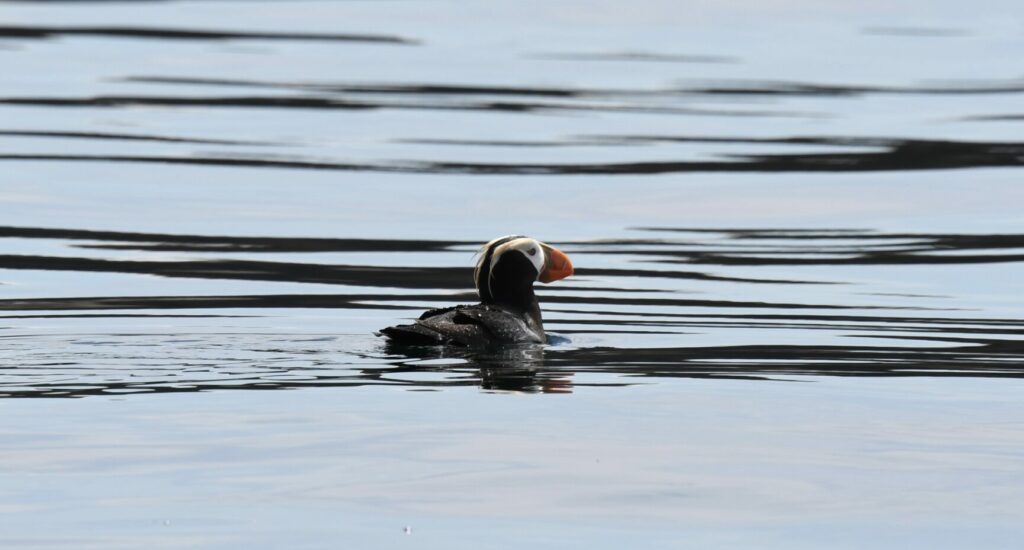
Tufted Puffin Conservation
Although in general the tufted puffin as a species is doing quite well (IUCN Red Listed as “Least Concern”), under Washington State law, they are listed as “Species of Greatest Conservation Need” (SGCN). This means that there are dedicated efforts at the state level in order to identify current threats and put in measures to mitigate them.
